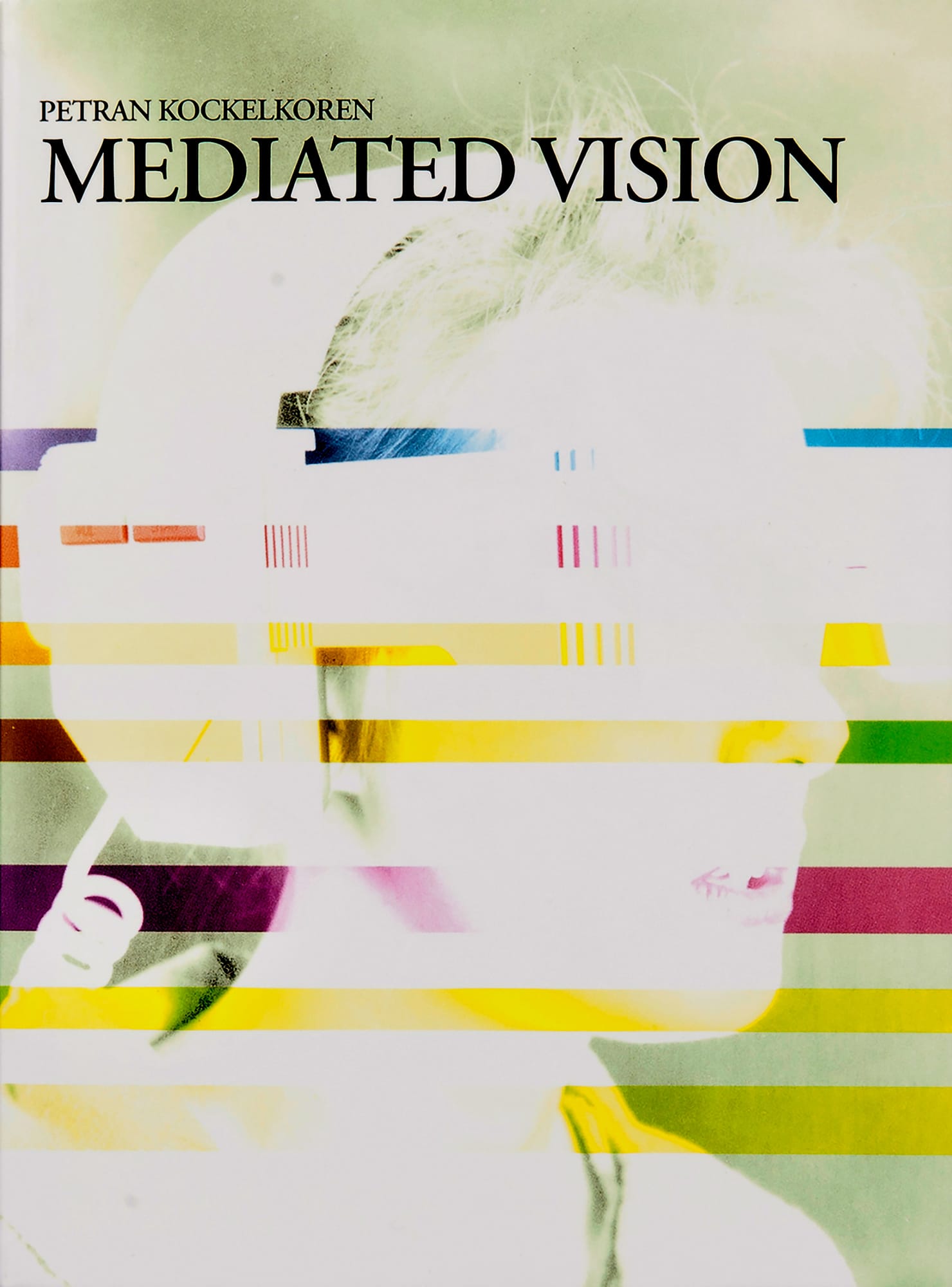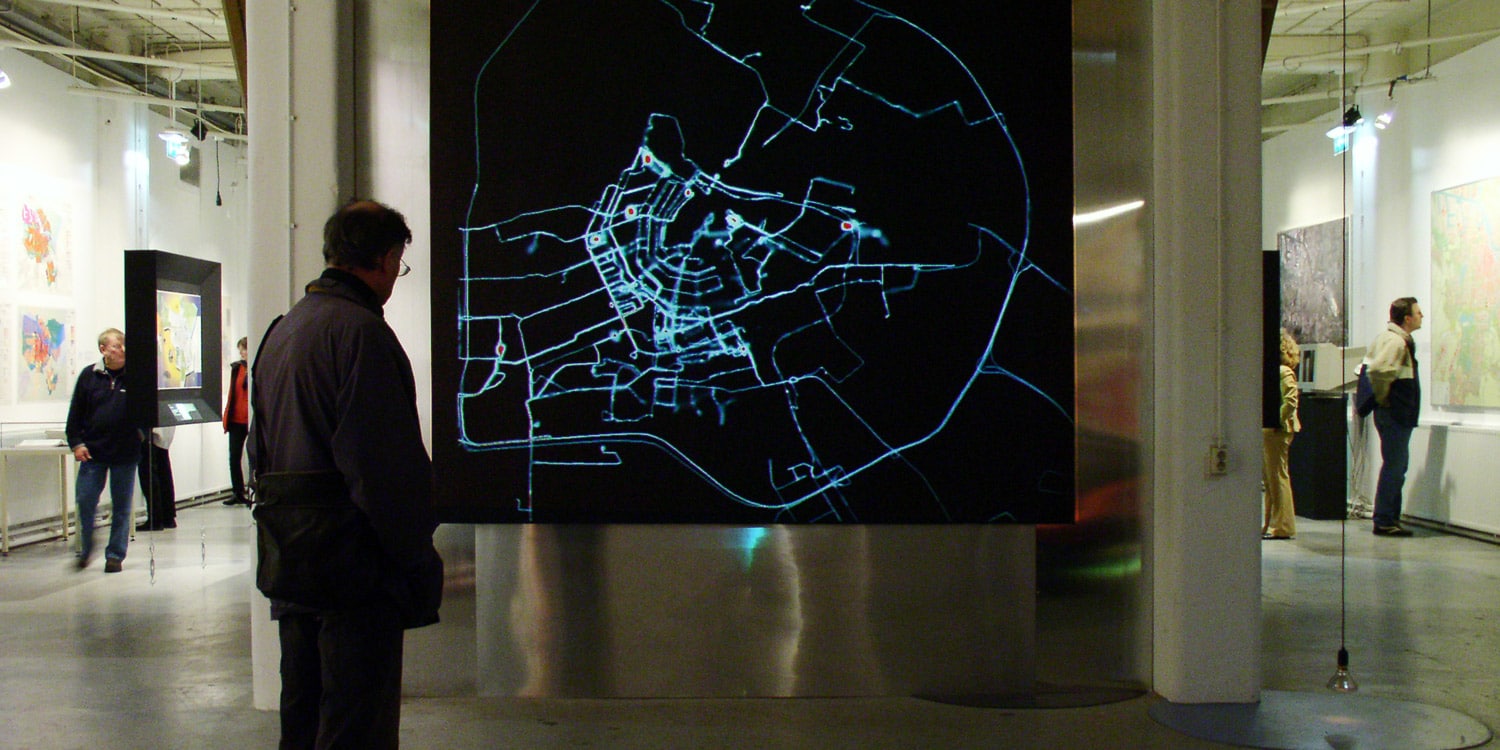In his book Mediated Vision, in the article Art as Research? philosopher Petran Kockelkoren elaborates on the theory of technical mediation to analyze works of art as artists’ research projects in that light.
In the text below, he describes Esther Polak’s method (starting on page 14) as organizing a personal confrontation with new mediations.
AmsterdamREALTIME in the 2002 exhibition Maps of Amsterdam at the Amsterdam City Archives.
MILKproject participant points to his route to tell what decisions he made there.
[…] The Dutch artist Esther Polak, on the other hand, organises the appropriation of and involvement with new mediations on the spot as an essential component of her work. Esther Polak focuses on our orientation in the world. Operating like an anthropologist, she mingled with researchers, looked through their microscopes, and reported on what she saw (in the Dutch weekly De Groene Amsterdammer). She went out with bird-watchers and viewed the world through their binoculars (described in Het lezen is de vijand van het kijken [Reading is the enemy of looking], 2003).
In 2002 she implemented the project Amsterdam REALTIME in the Amsterdam Municipal Archive. That project issued an arbitrarily selected number of residents of Amsterdam with a GPS (global positioning system), an instrument that uses satellite transmission to determine a precise position on the earth at any point in time, accurate to within a few metres. The routes taken by the participants through the city in their daily activities could be followed in real time on screen. They left ribbons of light behind them, and together they drew the map of Amsterdam during the day. This project achieved its apotheosis when a participant managed to retrace his steps and to draw a gigantic dove by walking through selected streets. He saw himself as the point of a pencil that he guided by changing his position as seen by the satellite.
The sequel to Amsterdam REALTIME was MILK. In this project, the GPS tracking device was tried out on milk producers in Lithuania. The idea was to follow the milk from the individual cow belonging to a small farmer in Lithuania to the churn, via the milk collection and milk transport to the milk factory, and from there through Europe, including the Netherlands, where it is sold as cheese on the market. But the preliminary trajectory of the project was already enough to change the perceptions of the participants considerably, and these were food for thought. When they were confronted with the recorded images of their own piece of the milk route, this new form of visualisation turned out to provoke emotional memories and reactions on the part of the producers. People are used to collecting photographs that present their holiday chronologically, for example. But the confrontation with a projected GPS route – where the thickness of the line indicates where they dawdled and hung around – offers a completely different mediated experience from photographs. The routine patterns and deliberately chosen detours are precisely delineated and form a legible record of the past. The final presentation of the MILK project shows the filmed reactions of farmers and milk transporters, who talk about their ties to their region on the basis of the GPS images.
The MILK project is another example of translations between different forms of visualisations of experiences. Moreover, Esther Polak’s researches involve a social feedback programme as part of the art project itself, enabling people to orientate themselves in the world in a new way. That is an added value that I shall explore by itself in the areas of environmental planning to bring my inventory to a close. […]


